This Post May Contain Affiliate Links. Please Read Our Disclosure Policy.
Delicate, flaky salmon fillets are easier than ever with this sous vide salmon recipe. The salmon is seasoned perfectly, then slow cooked to perfection thanks to the sous vide. It’s a foolproof method that’ll give you impossibly incredible salmon every single time.
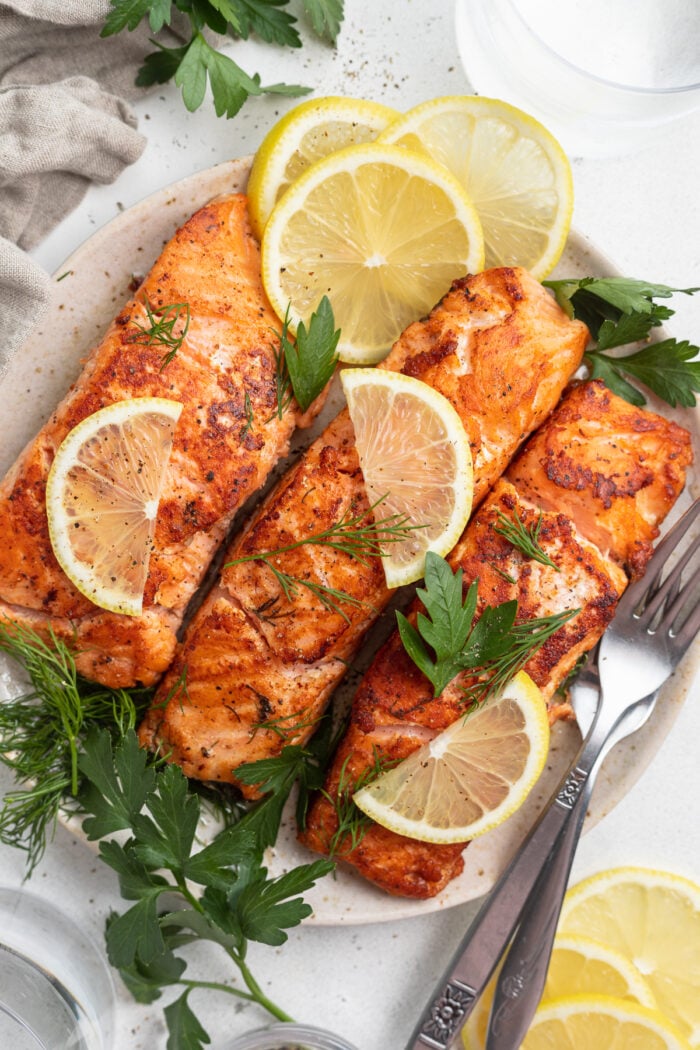
What Makes This Recipe So Good
- Even though the method can sound a little intimidating, I promise you that cooking with a sous vide circulator is actually super easy! It’s a game changer, honestly. The sous vide method is pretty much foolproof, and it takes all the guesswork out of cooking. If you’re tired of dry, overcooked salmon fillets from the oven or the stovetop, give this method a try before you give up on them completely.
- Sous vide salmon is delicate, flaky, and absolutely mouth-watering. To really put it over the top, we’ll finish it off with a quick sear in a pan of a butter, giving the salmon an amazingly rich, crisp crust that locks in all the flavors of the aromatics.
- Salmon is full of omega-3s and other essential vitamins and nutrients that your body will love. Not only that but it’s a naturally keto-friendly, low carb, gluten-free protein that can be paired with a variety of sides. If you’re following a paleo-lifestyle or you’re on a Whole30-round, just swap out the butter for ghee or avocado oil, and voila! You’ve got an entrée that almost everyone can enjoy together.
Chef’s Tips
- Before you start, double check that the salmon fillets are free of bones. Gently run your fingers over the fish – if you feel any bones, carefully remove them with a pair of fish tweezers or needle nose pliers. Be careful not to tear or damage the actual meat of the salmon as you remove the bones. If you buy your salmon from the fish market or deli, you can totally ask the butcher to make sure your fillets are completely deboned so you don’t have to worry about it.
- Make sure you pat down the salmon fillets with paper towels before you put them in the bag. It seems unnecessary, but I promise it makes a difference in the overall texture of the fish, and it’ll let the salmon soak up even more of the aromatics in the bag.
- Don’t panic if you don’t have a vacuum sealer. You can easily close up the bag just by using the preheated water! Seal your food-safe bag a little more than halfway, then very slowly lower the bag into the hot water. You’ll see the bag draw up around the fillets and aromatics, sort of like shrink wrap. Once all the air in the bag has been forced out, seal the bag the rest of the way and submerge the salmon in the water.
- Like steak, salmon can be eaten at different temperatures and levels of doneness. The food-safe internal temperature for salmon is 145° Fahrenheit, which will give you a well-done fillet. If you like your salmon less-done, though, you can cook it for less time or set the sous vide to a lower temperature. For a softer fillet, set the sous vide to 110°-115°F. For a firmer fillet, set it to 130°F. Don’t go any higher than 135°F or you’ll end up with mushy, overcooked fish.
- Speaking of doneness, keep in mind that you’re finishing the salmon off in a hot skillet full of hot butter. The fish should be cooked-through but slightly underdone when it comes out of the sous vide so that you don’t overcook it in the pan. I highly recommend using an internal meat thermometer after the sous vide and during the sear so you get the exact salmon texture you prefer.

More Delicious Ways to Enjoy Salmon
- Salmon Salad
- Air Fryer Salmon with Brown Sugar Crust
- Miso Salmon
- Honey Chipotle Salmon BBQ Nachos
- Keto Sushi Rolls with Smoked Salmon
- Easy Salmon Patties & Lemon Garlic Sauce
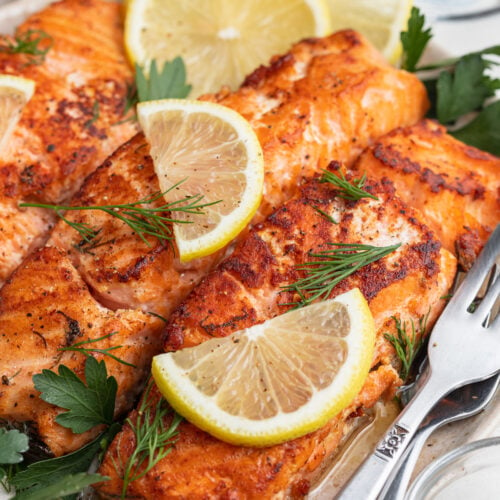
Sous Vide Salmon
Equipment
- Large pot or other large, heat-resistant container
- Sous vide immersion circulator
- Cutting board or plate
- Paper towels
- large food-safe vacuum sealing bags or large sealable food-safe plastic bag
- vacuum sealer optional, see Notes for alternative
- Large skillet
- fish spatula optional but recommended
- internal meat thermometer optional but encouraged
Ingredients
- 4 salmon fillets approximately 5-6 ounces each
- salt to taste
- freshly cracked black pepper to taste
- 1 tablespoon olive oil or other neutral oil
- 1 lemon sliced into thin coins
- ½ cup fresh herbs of choice fresh dill, parsley, thyme, etc.
- 2 tablespoons butter or ghee
Instructions
- Fill large pot or other large, heat-resistant container with water. Insert sous vide immersion circulator and set to 125° Fahrenheit or other temperature as desired (see Notes). Note: pot must be deep enough that water level falls between minimum and maximum indicators on circulator.
- Once water is preheated, place salmon fillets on cutting board or plate. Pat fillets completely dry on all sides with paper towels, then season liberally with salt and pepper on all sides.
- Place seasoned salmon fillets in food-safe vacuum sealing bag. Add olive oil, lemon coins, and fresh herbs of choice. Close bag and use vacuum sealer or water displacement method (see Notes) to remove as much air as possible.
- Submerge salmon fillets in preheated water bath and cook 45 minutes. Once 45-minute cook time is up, immediately remove bag of salmon fillets from water bath.
- Preheat large skillet over medium heat until pan is very hot, approximately 3 to 5 minutes. Add butter or ghee to hot skillet and let melt completely, then remove salmon fillets from bag and transfer to skillet.
- Sear salmon fillets 1 to 2 minutes or until golden-brown crust begins to form and fillets easily release from skillet. Flip fillets over and sear another 1 to 2 minutes, then transfer fillets to serving plates. Serve immediately with desired sides.
- The salmon fillets should all be the same size and thickness so that they cook evenly and at the same speed. For smaller or thinner salmon fillets, you may need to lower the cook time to avoid overcooking them. If you’re using large or especially thick fillets, you may need to add 5-10 minutes to the cook time, depending on your preferred doneness.
- The salmon fillets must be fully submerged in order to cook properly. If any portion of the salmon is above the water, you risk the fillets not cooking all the way. If needed, you can tie or tape weights or silverware to the bottom of the bag to keep it submerged.
- Water Displacement Method: If you don’t have a vacuum sealer, place your ingredients in an appropriately-sized plastic bag (like a Ziploc gallon-sized bag) and seal bag halfway across the top. Heat water with sous vide immersion circulator, then slowly lower the bag into the water. You should see the plastic cling to the food as the pressure from the hot water forces the air out. Once the food is entirely submerged and the air is completely out, seal the bag completely and continue with the recipe.
- Make it Whole30/Paleo: Use ghee or avocado oil instead of butter.
Temperatures and Results
- For very soft, buttery salmon fillets, set sous vide to 110° Fahrenheit.
- For translucent, slightly-flaky fillets, set sous vide to 115° Fahrenheit.
- For moist, tender, flaky fillets, set sous vide to 120°-125° Fahrenheit.
- For very firm fillets, set sous vide to 130° Fahrenheit.
Approximate Information for One Serving
Nutrition Disclaimers
Number of total servings shown is approximate. Actual number of servings will depend on your preferred portion sizes.
Nutritional values shown are general guidelines and reflect information for 1 serving using the ingredients listed, not including any optional ingredients. Actual macros may vary slightly depending on specific brands and types of ingredients used.
To determine the weight of one serving, prepare the recipe as instructed. Weigh the finished recipe, then divide the weight of the finished recipe (not including the weight of the container the food is in) by the desired number of servings. Result will be the weight of one serving.
Did You Make This Recipe?
Tag @40aprons on Instagram and be sure to leave a review on the blog post!



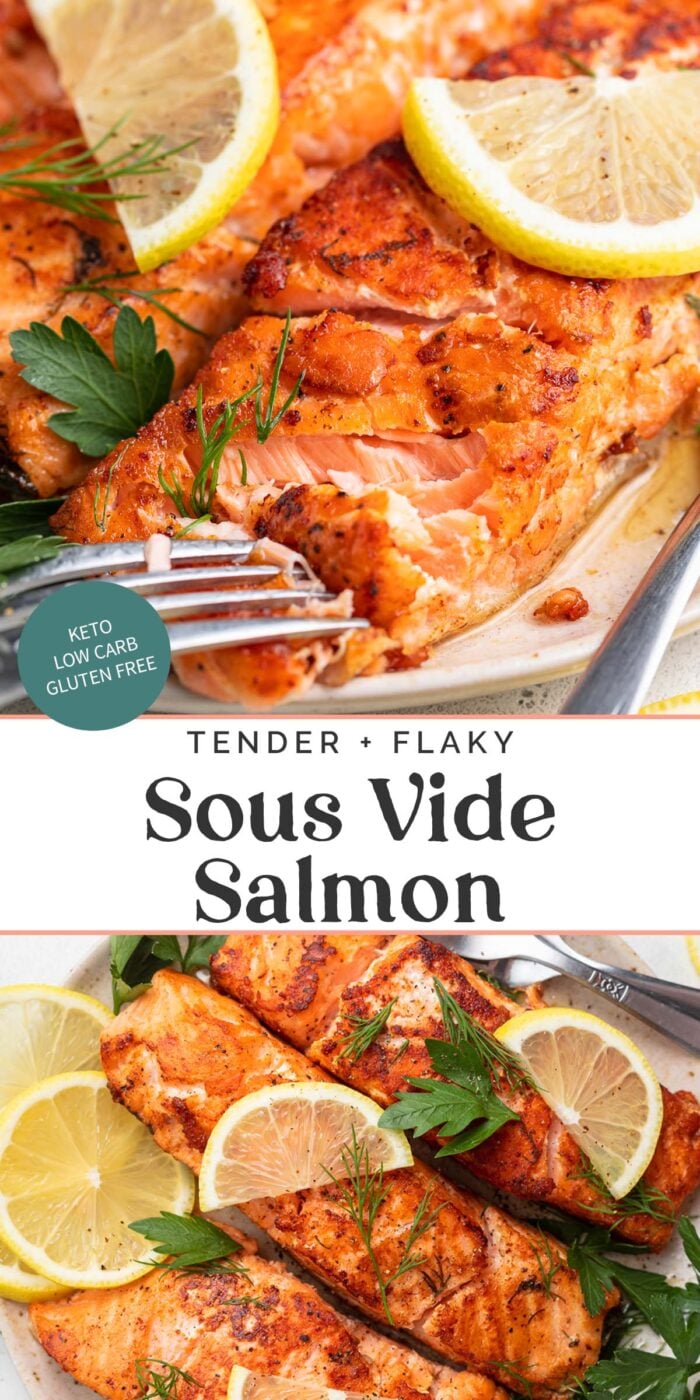
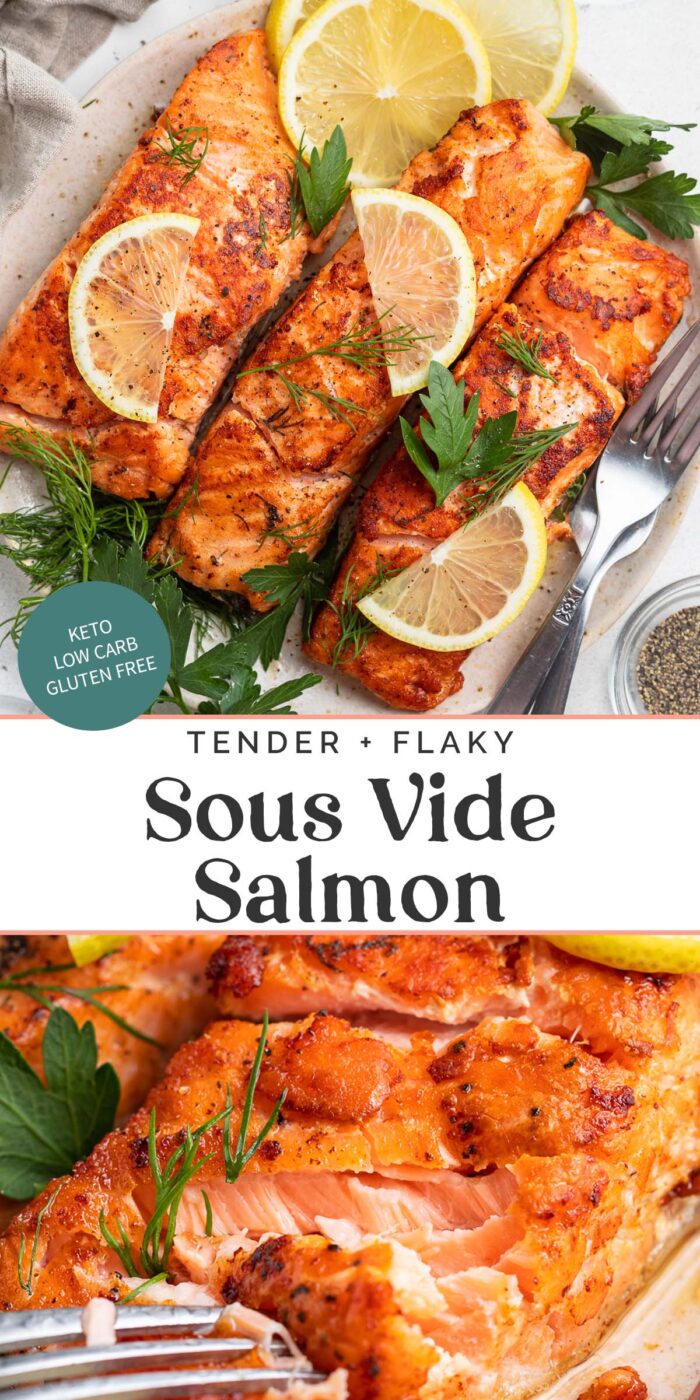
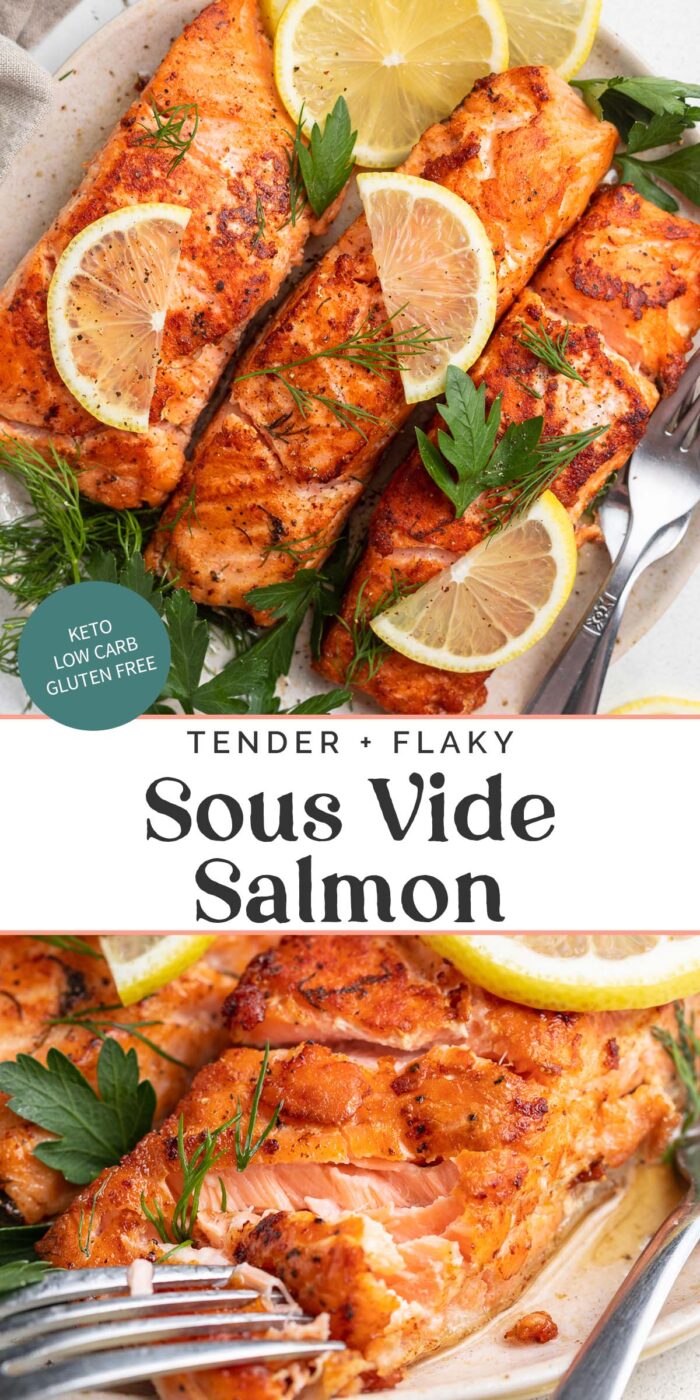
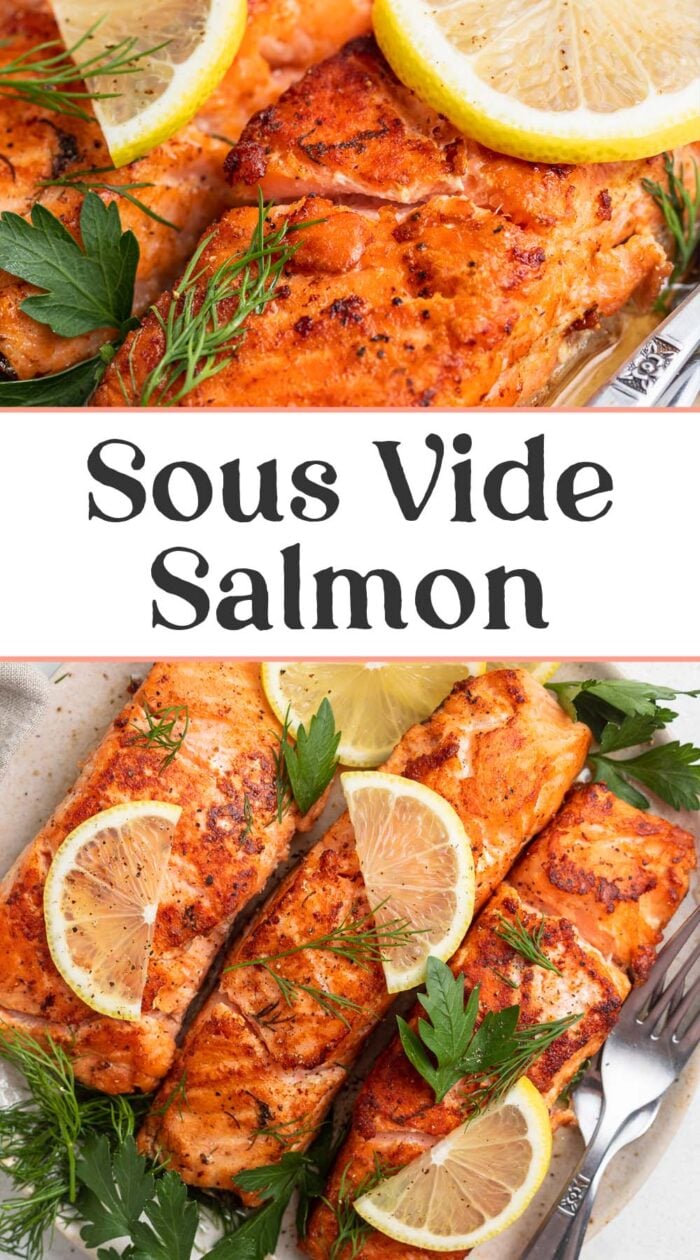

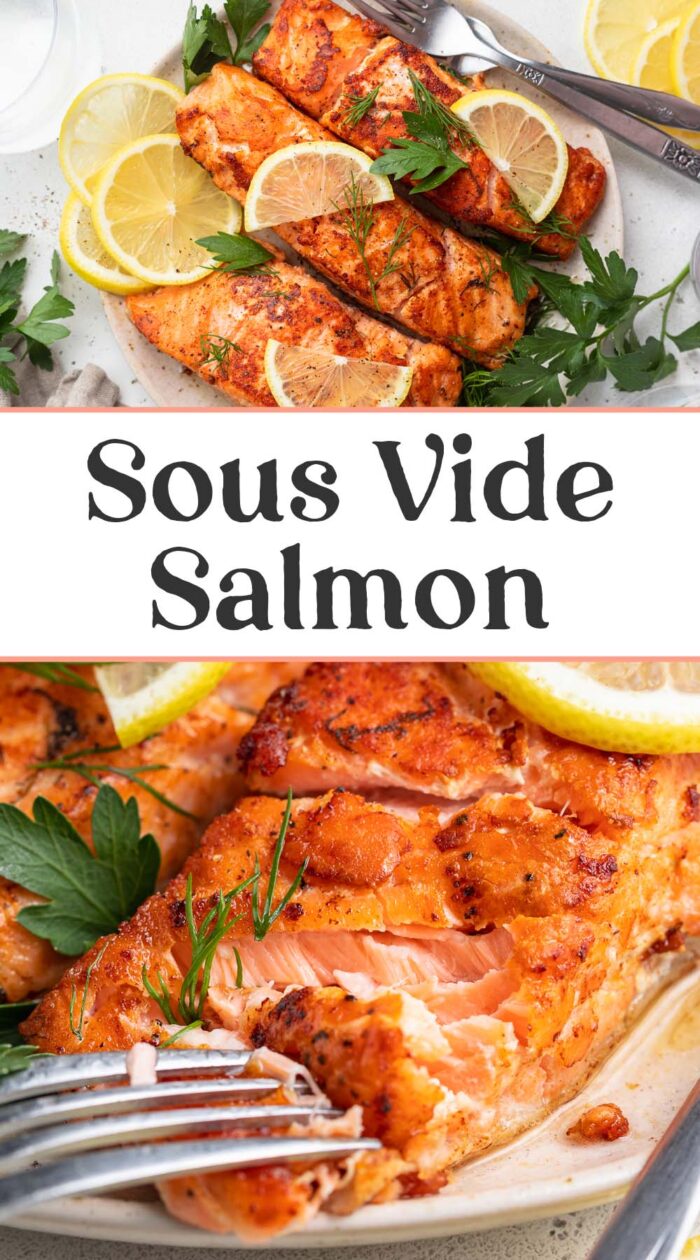


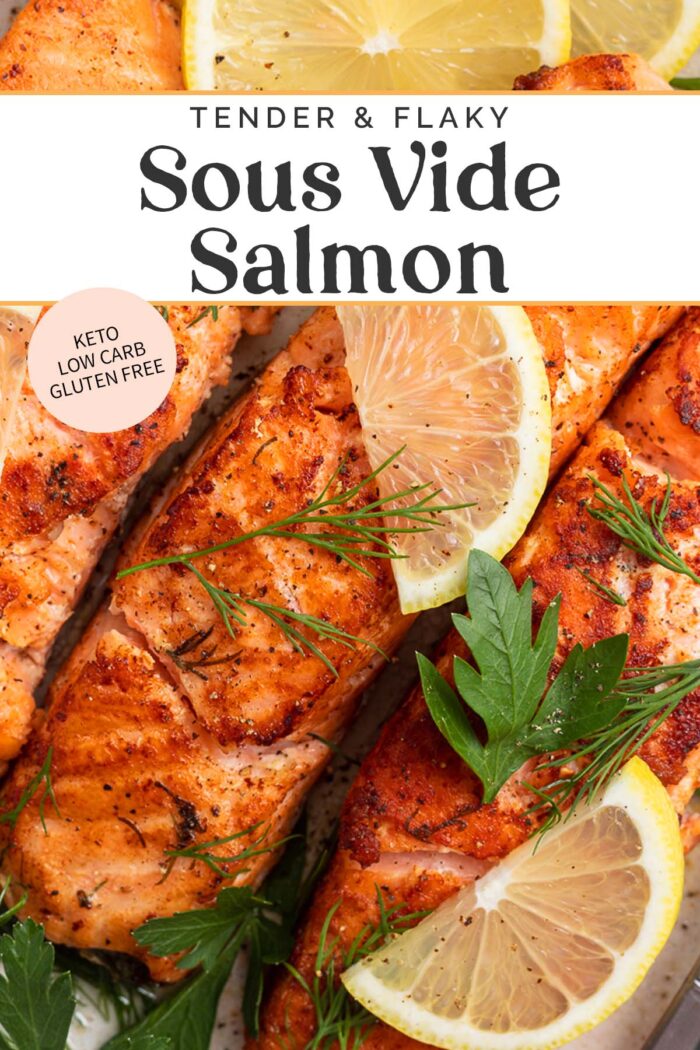
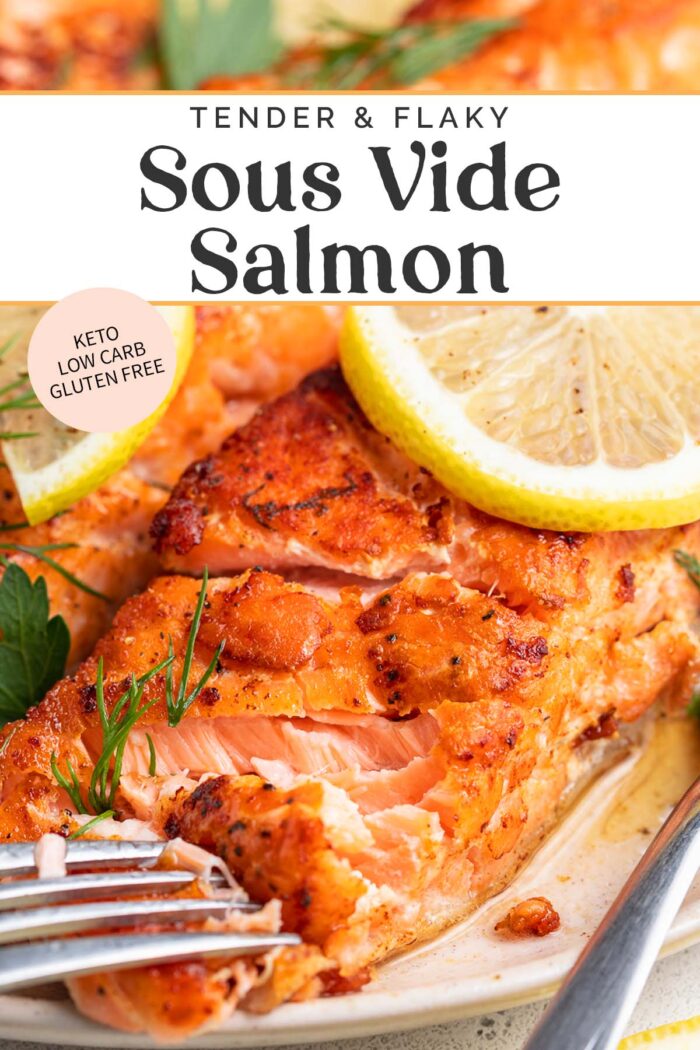

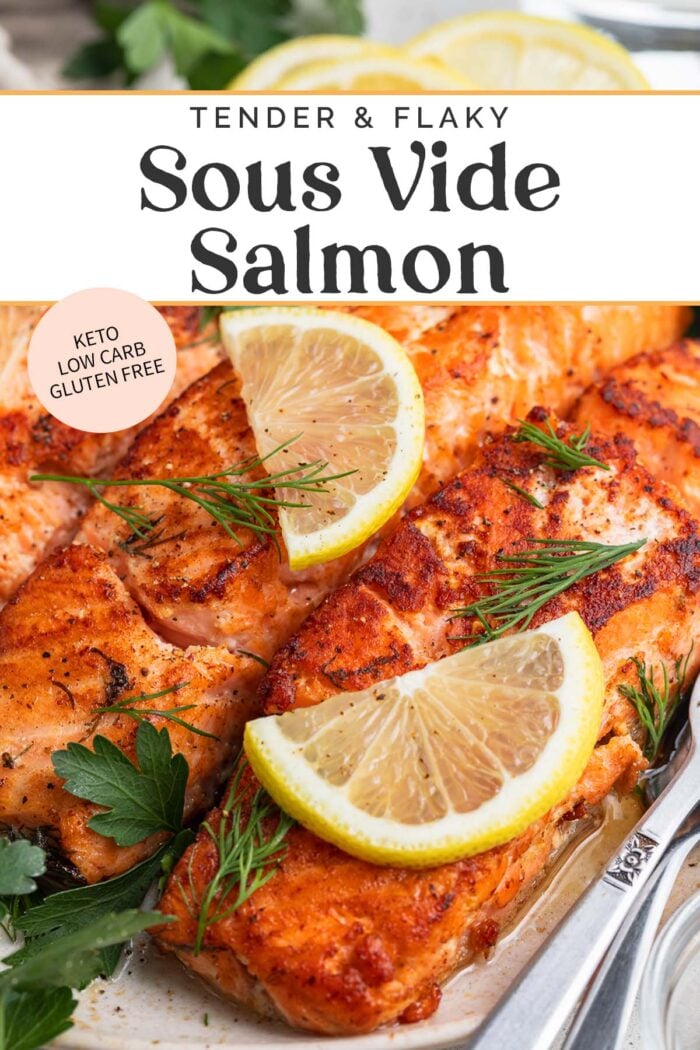


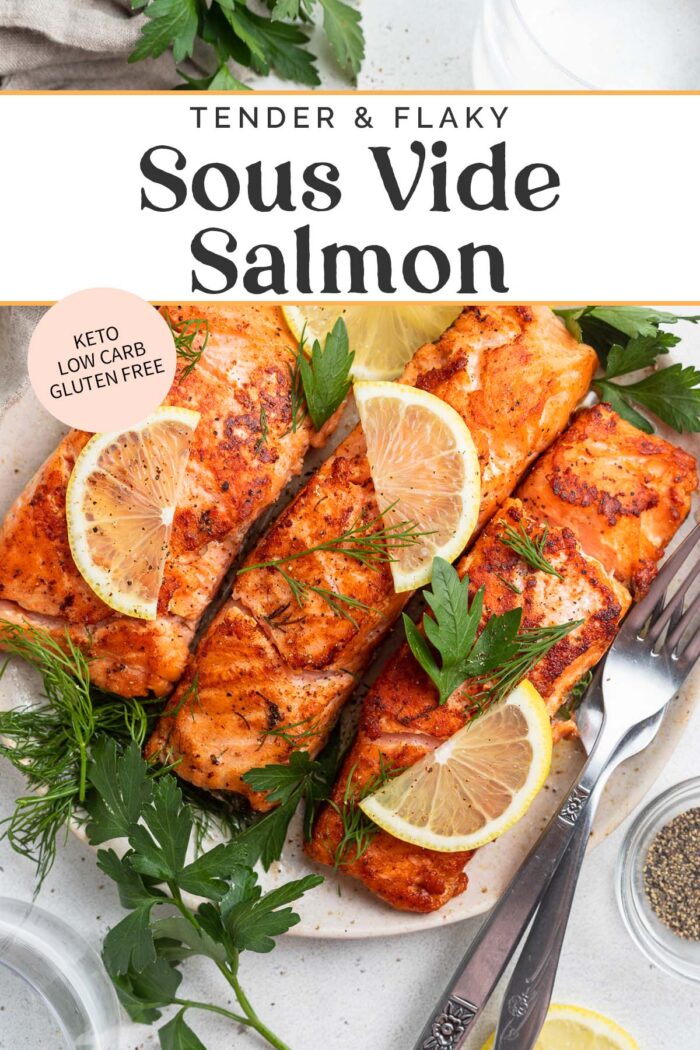
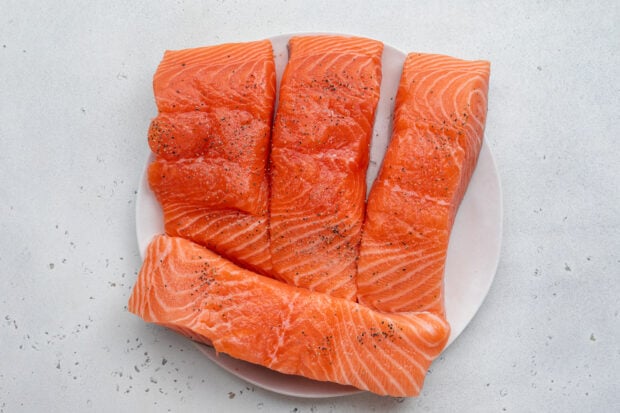

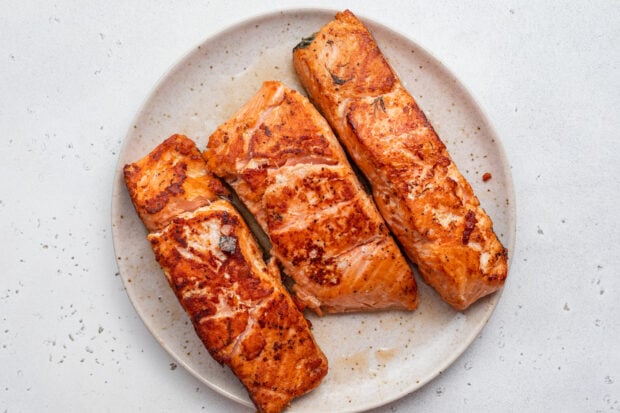
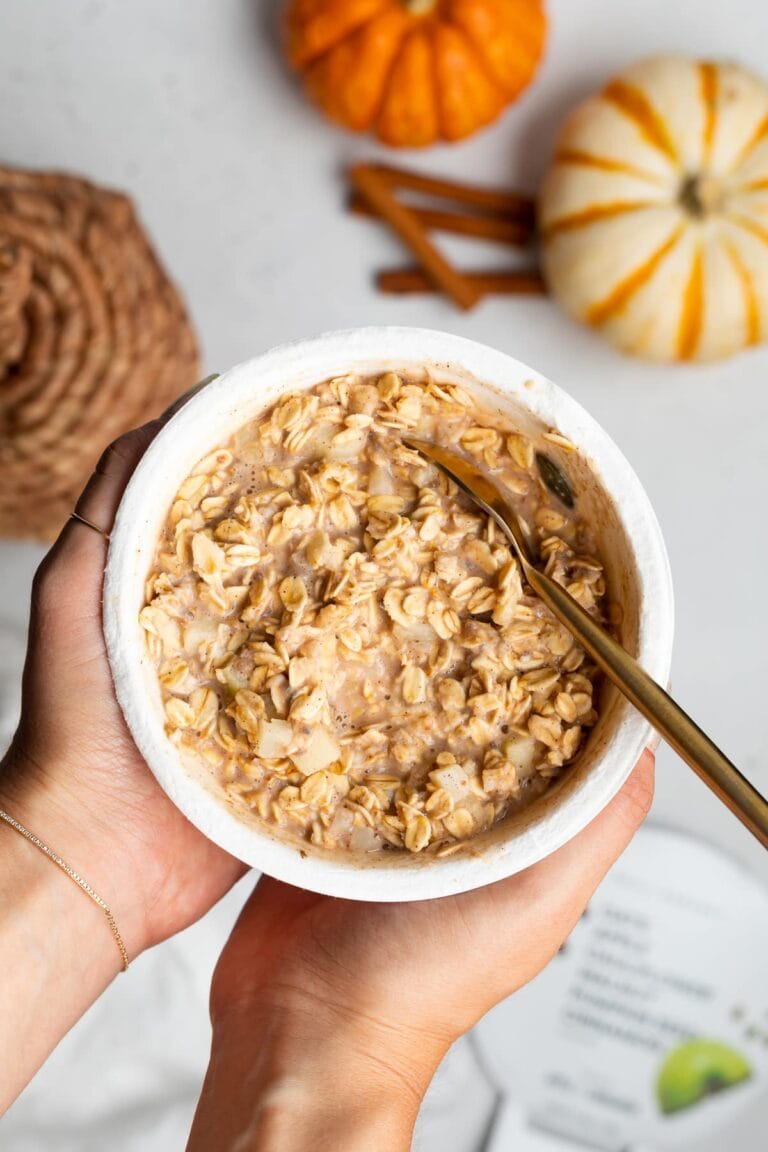
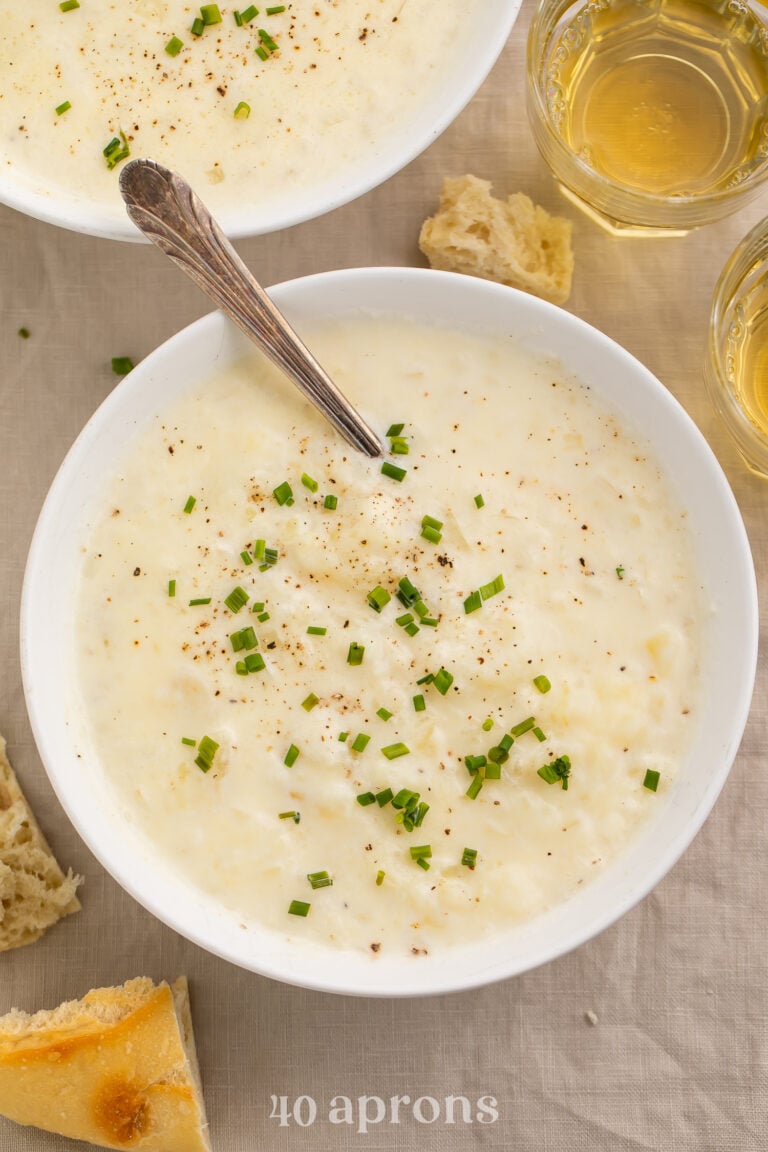


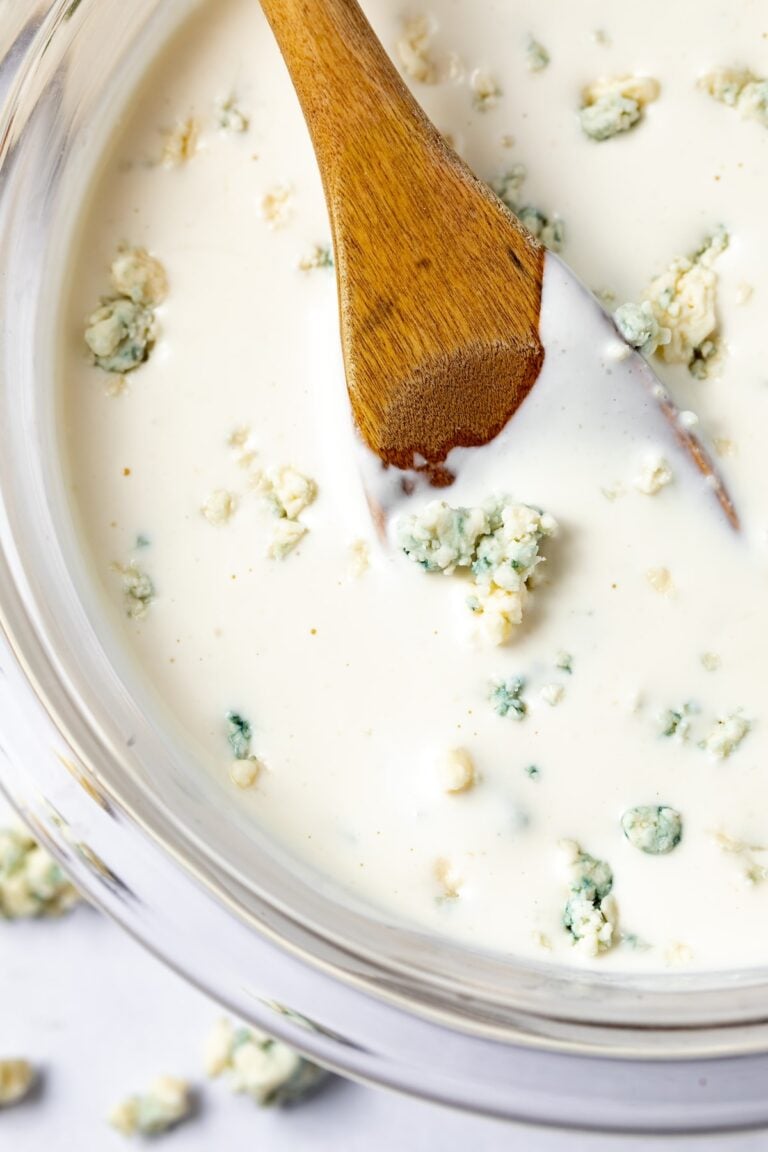
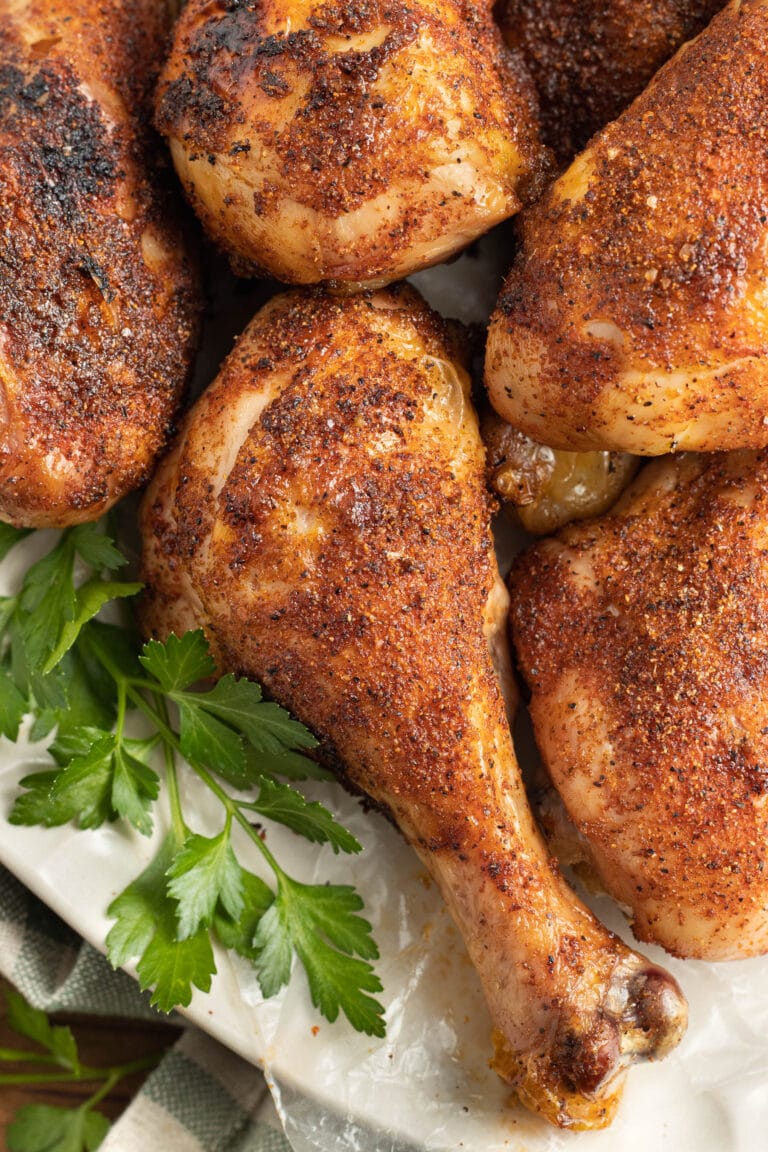










Never Miss A Meal!
New Recipes Straight To Your Inbox
A curated selection of our most recent recipes, delivered straight to your inbox once a week.
Thank you!
You have successfully joined our subscriber list.